CPS Unit Number 008-01
Camp: 8
Unit ID: 1
Operating agency: MCC
Opened: 6 1941
Closed: 4 1943
Workers
Total number of workers who worked in this camp: 139
-
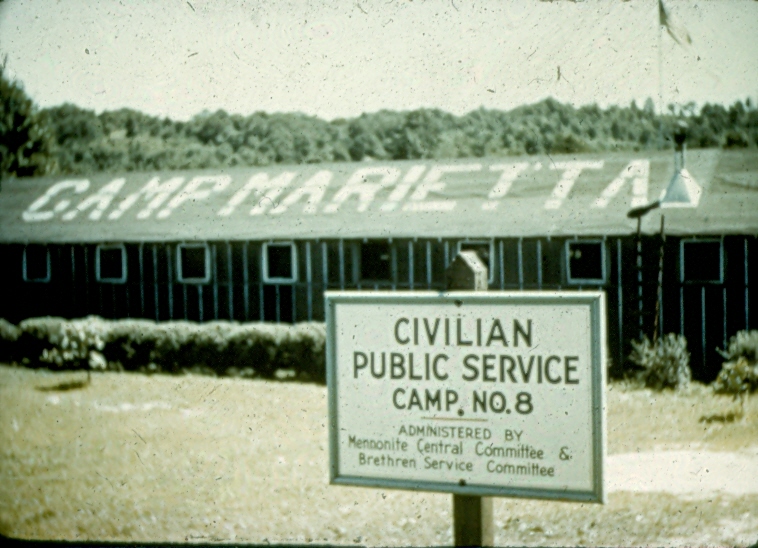 CPS Camp # 8Marietta, Ohio.Digital Image © 2011 Brethren Historical Library and Archives. All Rights Reserved.
CPS Camp # 8Marietta, Ohio.Digital Image © 2011 Brethren Historical Library and Archives. All Rights Reserved. -
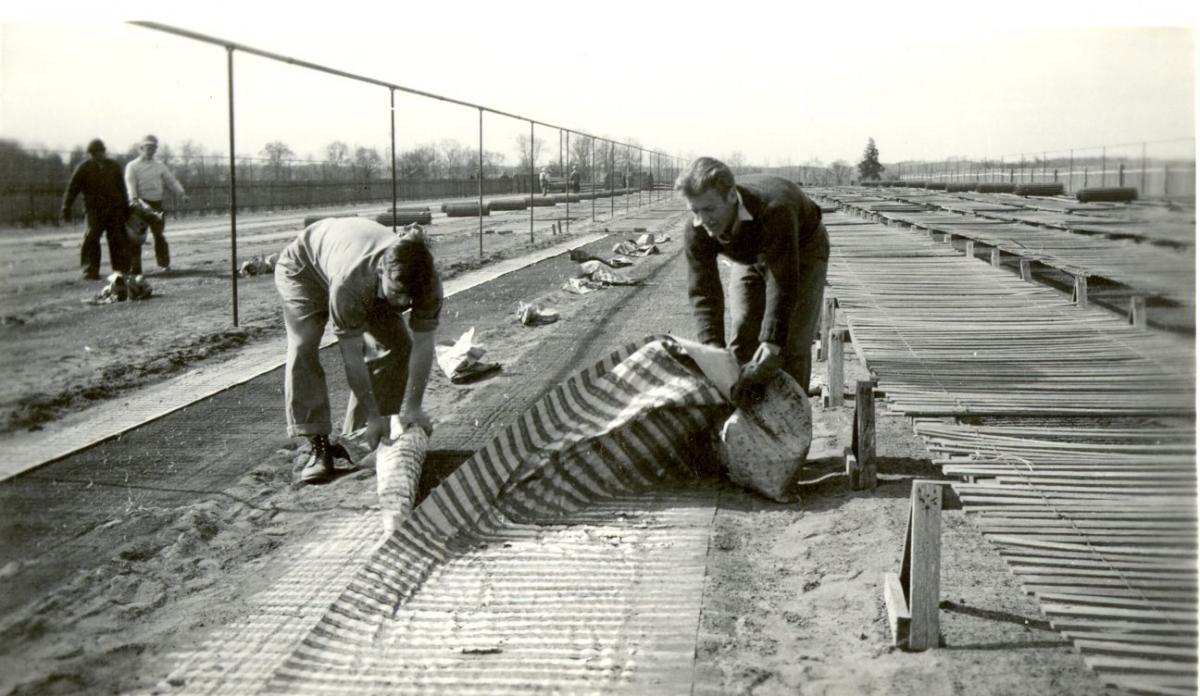 CPS Camp # 8, Marietta, OhioWorking at Camp 8 in Marietta, OhioPhoto # 4, Box 1, Folder 10. MCC Photographs, Civilian Public Service, 1941-1947. IX-13-2.2. Mennonite Central Committee Photo Archive
CPS Camp # 8, Marietta, OhioWorking at Camp 8 in Marietta, OhioPhoto # 4, Box 1, Folder 10. MCC Photographs, Civilian Public Service, 1941-1947. IX-13-2.2. Mennonite Central Committee Photo Archive -
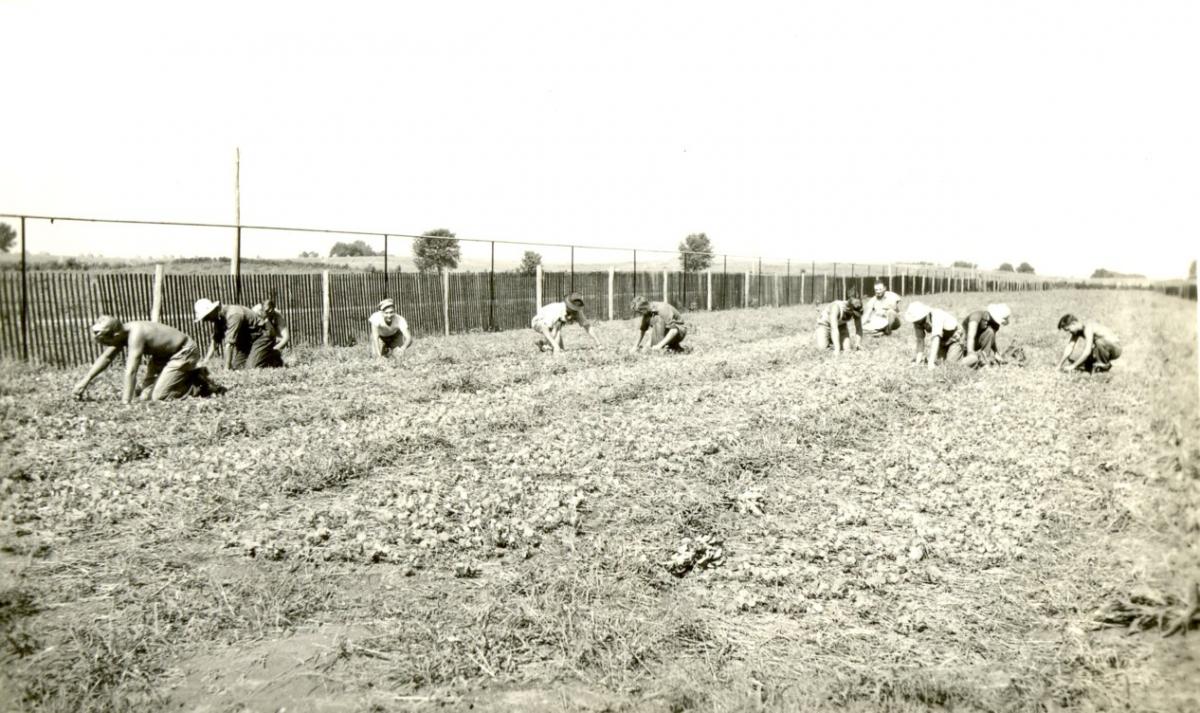 CPS Camp # 8, Marietta, OhioWorking in the fields of Camp 8, Marietta, OhioPhoto # 18. Box 1, Folder 10. MCC Photographs, Civilian Public Service, 1941-1947. IX-13-2.2. Mennonite Central Committee Photo Archive
CPS Camp # 8, Marietta, OhioWorking in the fields of Camp 8, Marietta, OhioPhoto # 18. Box 1, Folder 10. MCC Photographs, Civilian Public Service, 1941-1947. IX-13-2.2. Mennonite Central Committee Photo Archive -
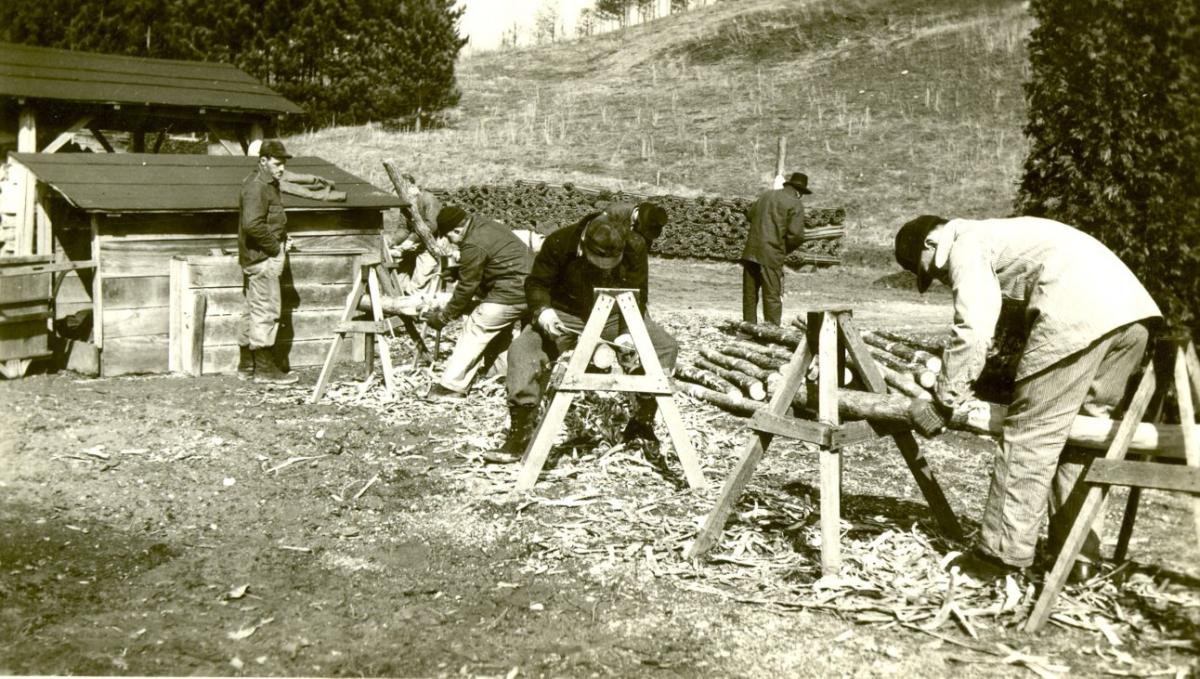 CPS Camp # 8, Marietta, OhioSawing logs at Camp # 8Photo # 790. Box 1, Folder 10. MCC Photographs, Civilian Public Service 1941-1947. IX-13-2.2. Mennonite Central Committee Photo Archive
CPS Camp # 8, Marietta, OhioSawing logs at Camp # 8Photo # 790. Box 1, Folder 10. MCC Photographs, Civilian Public Service 1941-1947. IX-13-2.2. Mennonite Central Committee Photo Archive -
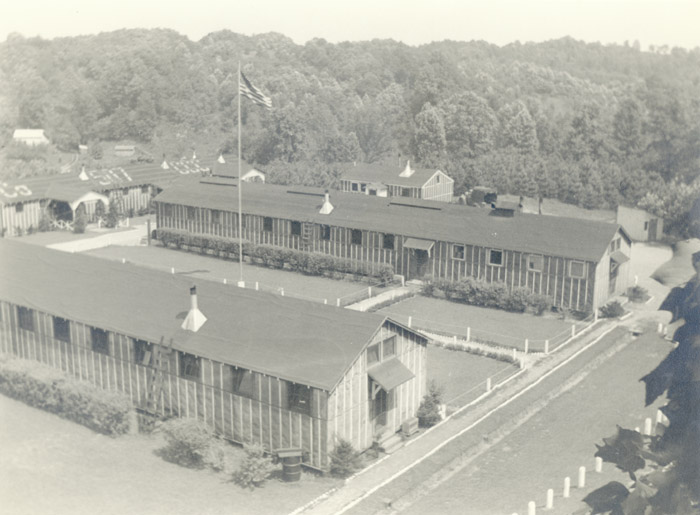 CPS Camp No. 8Civilian Public Service camp #8, Marietta, Ohio, general view.Digital image at Mennonite Church USA Archives, North Newton, Kansasca. 1942
CPS Camp No. 8Civilian Public Service camp #8, Marietta, Ohio, general view.Digital image at Mennonite Church USA Archives, North Newton, Kansasca. 1942
-

-
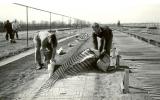
-
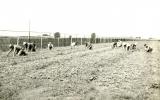
-
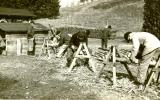
-
 ca. 1942
ca. 1942
This Soil Conservation Service base camp was located four miles up the Newport Pike and seven miles southeast of Marietta, Ohio overlooking the Ohio River. The Mennonite Central Committee (MCC) and Brethren Service Committee (BSC) jointly operated the camp from its opening in June 1941 until May 1942 when MCC assumed full responsibility for the camp. It closed in April 1943.
Originally, the BSC and the MCC shared responsibility for two Forest Service camps: Marietta and CPS Camp No. 21 at Cascade Locks. The joint arrangement proved to be administratively inconvenient so Marietta became an MCC camp and the BSC assumed full control of Cascade Locks.
Directors: David Wedel, Quintus Leatherman, John Schmidt
Dietician: Ruth Schmidt
Matron: Mrs. Quintus Leatherman
Nurse-Matron: Mrs. Robert Eschleman
The men at the camp when entering CPS reported both Mennonite and Brethren denominational affiliations along with a mix of others as well.
The majority of men in Mennonite camps reported their occupations as farming and other agricultural work when entering CPS, with twelve percent reporting technical and professional work and eleven percent business, management, sales and public administration. Men in Brethren camps reported a more diverse set of occupations when entering CPS with twenty-nine percent declaring farming and other agricultural work, eighteen percent technical and professional work, and sixteen percent business management, sales and public administration work. (Sibley and Jacob p. 172)
The men worked in the sixty-eight acre Forest Service nursery containing between 25-30 million pine seedlings. They sowed seeds, cultivated seedlings, transplanted young trees and prepared them for shipment to Ohio forests and farms. “In 1942, three million trees were shipped from the Marietta Nursery.” (Gingerich)
The Mennonites emphasized four goals in educational programming: instruction in Mennonite heritage and mission, clarification of Christians’ relationship to state and community, deepening spiritual experience, and “promoting personal growth by teaching skills with occupational benefit for the men”. (Keim p. 87) These goals were translated into a three month study of Mennonite heritage, and all were strongly urged to participate. An educational director in the Mennonite base camps worked with the educational secretary in the MCC headquarters.
The Brethren also emphasized the educational program with a particular attempt to tailor it to the men’s interests.
Both of the operating agencies were open to change in the programs as the CPS program evolved. All were interested in providing training for post war relief efforts as an on-going concern of the National Service Board for Religious Objectors. Justus Holsinger and John Bender, two men at Marietta, transferred from the camp to Goshen, Indiana to assist Dr. M. C. Lehman in preparing materials for the Mennonite intensive relief training school.
The men published a camp paper Whispering Pines from December 22, 1941 through April 1943.
For more information on Mennonite forest service camps, see Melvin Gingerich, Service for Peace: A History of Mennonite Civilian Public Service. Akron, PA: Mennonite Central Committee printed by Herald Press, Scottdale, PA 1949, Chapter XI, pp. 125-148.
For more information on work in Brethren camps, see Leslie Eisan, Pathways of Peace: A History of the Civilian Public Service Program Administered by the Brethren Service Committee. Elgin, IL: Brethren Publishing House, 1948, Chapter 3 pp. 75-111; for camp life and educational activities, see Chapter 4 pp. 112-187.
For more information on Forest Service camps see Albert N. Keim, The CPS Story: An Illustrated History of Civilian Public Service. Intercourse, PA: Good Books 1990.
See also Mulford Q. Sibley and Philip E. Jacob, Conscription of Conscience: The American State and the Conscientious Objector, 1940-1947. Ithaca, NY: Cornell University Press, 1952.
Swarthmore College Peace Collection, Camp periodicals database.